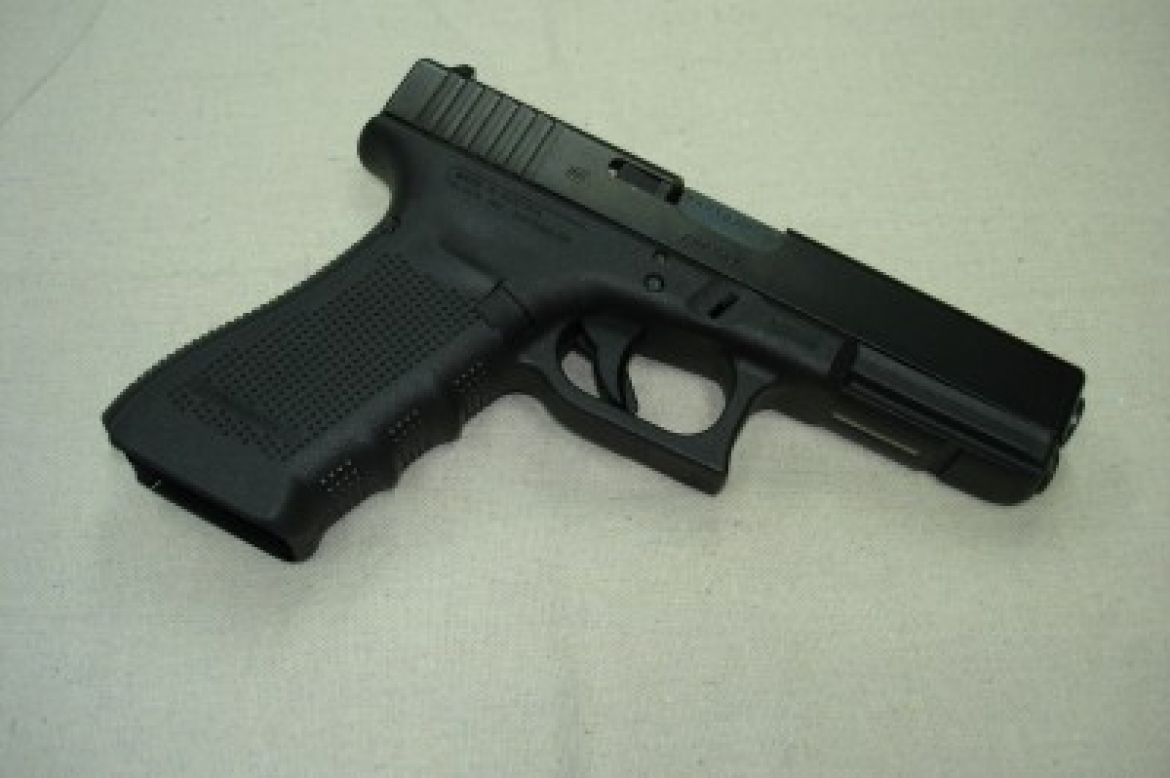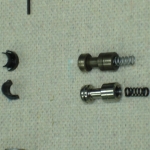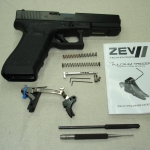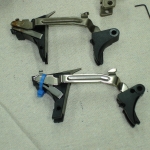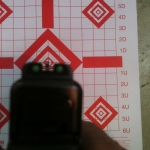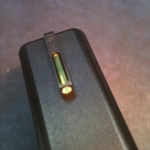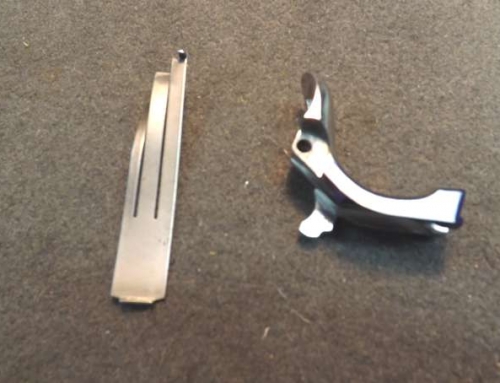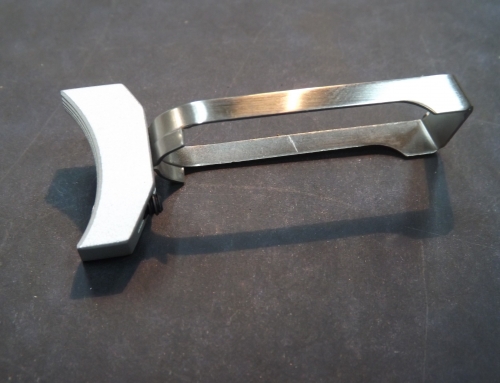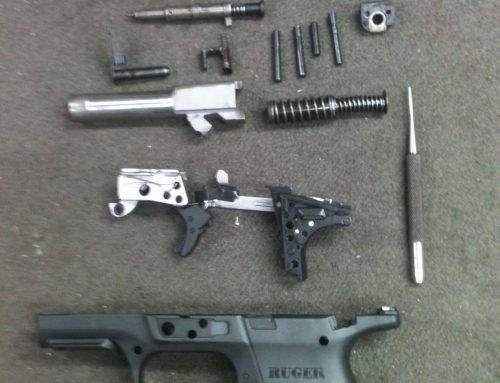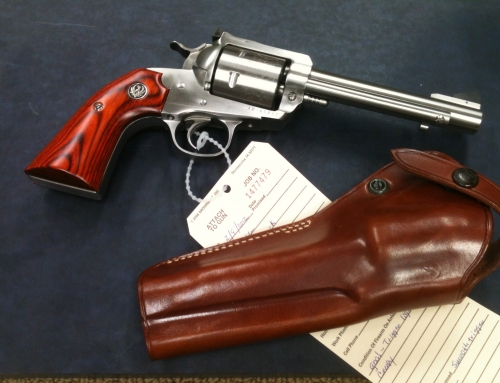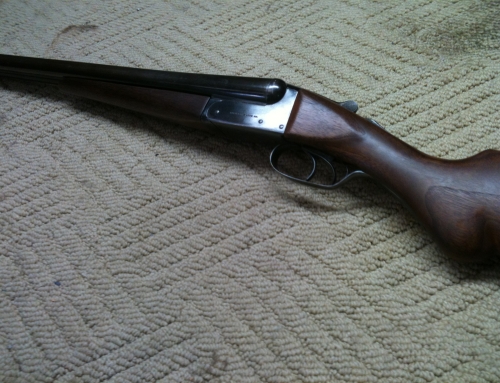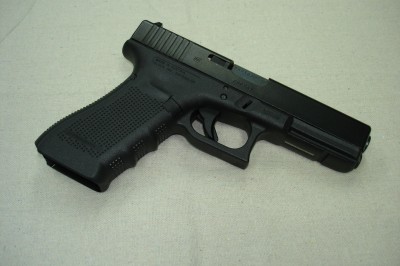 Glocks, without a doubt, are one of the most popular families of handguns ever to enter the market. They ride on the hips of countless law officers. They are carried by many concealed permit holders. They are used by more than a few handgun hunters, and are favored by legions of action pistol competitors.
Glocks, without a doubt, are one of the most popular families of handguns ever to enter the market. They ride on the hips of countless law officers. They are carried by many concealed permit holders. They are used by more than a few handgun hunters, and are favored by legions of action pistol competitors.
Reasons are many. They tend to go ‘BANG’ every time you pull the trigger. They are reasonably accurate. They are easy to maintain. They don’t break easy. And, almost anyone can afford one, or, even, one in each caliber, full size, compact and long slide.
As accepted as the Glocks have become, and as functional as they are, straight ‘out of the box’, there are still those who will go to any lengths to make a good thing better. It’s a lot like putting a little hot rod in your favorite ride!
I usually start Glock upgrades for my clients with a new match barrel. The OEM barrel is good enough, if you are only going to shoot jacketed bullets and only need to keep them within a few inches at 15 to 25 yards. Most OEM barrel will do this and last a good long time. However, if you want to shoot lead bullets, fast bullets, reloaded/match bullets and/or keep them within only an inch or two at the same distances, or better, a good match barrel with real lands & grooves rifling and a fully supported chamber is a must. There are several good match barrels available. Some are ‘drop-in’, and in a Glock, they usually, really do drop-in. And the tolerances on the Glocks I’ve seen are consistent enough that a drop-in, match barrel can make an impressive difference without resorting to gunsmith fitting. Of course, If you want that perfect fit, there are gunsmith fit barrels available also that require some filing of the fitting pad and hood so that a perfect fit can be obtained for each individual frame and slide combination. Barrels are available from KKM Precision, Lone Wolf Distributors, Storm Lake, Bar-Sto, Wilson Combat, and, undoubtedly, many others. I’m a little partial to Wilson Combat and Bar-Sto, but have used others and been very satisfied with the results.

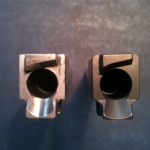
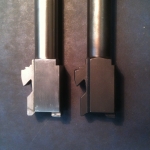
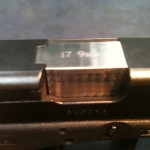 This is a Storm Lake barrel. The only fitting required was at the barrel hood and to polish the feed ramp. Notice the slight difference in the feed ramp and cartridge support area. The flat breech block just called out for a little extra decoration!
This is a Storm Lake barrel. The only fitting required was at the barrel hood and to polish the feed ramp. Notice the slight difference in the feed ramp and cartridge support area. The flat breech block just called out for a little extra decoration!
The next improvement many of my customers want is a better trigger pull for their Glocks. The OEM trigger is long, typically creepy, breaks at an excess of 5 to 6 lbs, has significant over travel and a long reset. All of these characteristics are possible to overcome and still shoot the gun fairly well. For law enforcement and personal protection carry, not all of these are bad. It may be that some of these features will keep the gun from being discharged inadvertently or accidentally when confronting a bad guy that you might not really want to shoot. I don’t recommend doing any significant trigger work on a Glock that is going to be carried and used as an LE sidearm. The OEM assembly works just fine. For those shooters who use their Glocks in competition and put anywhere from hundreds to many thousands of rounds through their gun in a single year, a competition trigger job can mean the difference between winning and losing, or, at least, the difference between frustration with your gun and a recognition that perhaps it is you, the shooter, that could use a little more practice.
There are several steps and approaches to getting a better trigger on the Glock. The first is to install a new trigger connector. There are models made by Glock, Ghost, Glockworx and Lone Wolf. There may be others. The new disconnectors will reduce the length of trigger pull, reduce the length to reset, reduce the trigger over travel and reduce the trigger pull weight. The contact surfaces are polished to reduce friction. The action angles are changed. Changes to trigger pull weight will vary from 5 lbs down to about 4 lbs depending on the gun.
The next step is to replace one or more of the springs that all add weight to the trigger pull. One is the trigger or sear spring itself. The next is the disconnector spring. And, finally the disconnector safety plunger spring. All can be reduced in weight slightly. All of the above manufacturers and several others offer individual replacement springs and spring kits for the adventurous to use in custom tailoring a spring pull weight. Even reducing the spring weights will only get the ultimate pull weight down to 3 1/2 lbs on most guns, but they markedly improve and smooth out the feel of the trigger pull.
Then, the best route is to replace the whole trigger action assembly with a custom complete kit that includes a new trigger with over travel adjusting screw, polished trigger bar, new geometry and polished disconnector, new springs and new sear assembly with polished contact surface. the Glockworx fulcrum trigger assembly is just such a product. It includes the adjustable trigger assembly, the springs, a polished safety plunger and a skeletonized titanium striker. The sum of the parts on the feel and action of a competition Glock is great! It feels better, shoots better and shoots faster from shot to shot.
Somewhere before, after or in-between the above upgrades, many shooters choose to have new sights installed on their Glocks. The OEM plastic rear sight with it’s typical white bar surrounding the notch and the white dot on the front do their job in the daylight and under some low light conditions, but, if a shooter really wants the sights to stand out, there is nothing better than good fiber optic insert sights unless its the combination tritium fiber optic sights. Tru Glo makes these sights. They are an excellent aid to daytime action pistol competition as well as aiming the gun in very low light or dark conditions.
After sending a a couple of mags full down range to seat the barrel and test for function, this grouping was fired from a Ransom Rest, just to see what the results would be. The trigger pull settled right at 3 1/4 lbs. The accuracy speaks for itself. After the first four rounds grouped around the bull’s eye, getting the gun to settle in the rest, the next six rounds grouped at .46″ center to center. This is way better than I can shoot even on my best day. So when I’m using this pistol for SSP in our local IDPA matches, I know it’s not the gun that’s keeping my scores up.
 Adding these parts and about 2 hours of gunsmith time to install and check out will cost about $700. I know a stock Glock 17 retails for $600, meaning these upgrades will more than double the cost of the gun. But, if you are a shooter who wants to know that your gun can be counted on to place round after round in the same ragged hole, It’ll be worth every penny.
Adding these parts and about 2 hours of gunsmith time to install and check out will cost about $700. I know a stock Glock 17 retails for $600, meaning these upgrades will more than double the cost of the gun. But, if you are a shooter who wants to know that your gun can be counted on to place round after round in the same ragged hole, It’ll be worth every penny.

